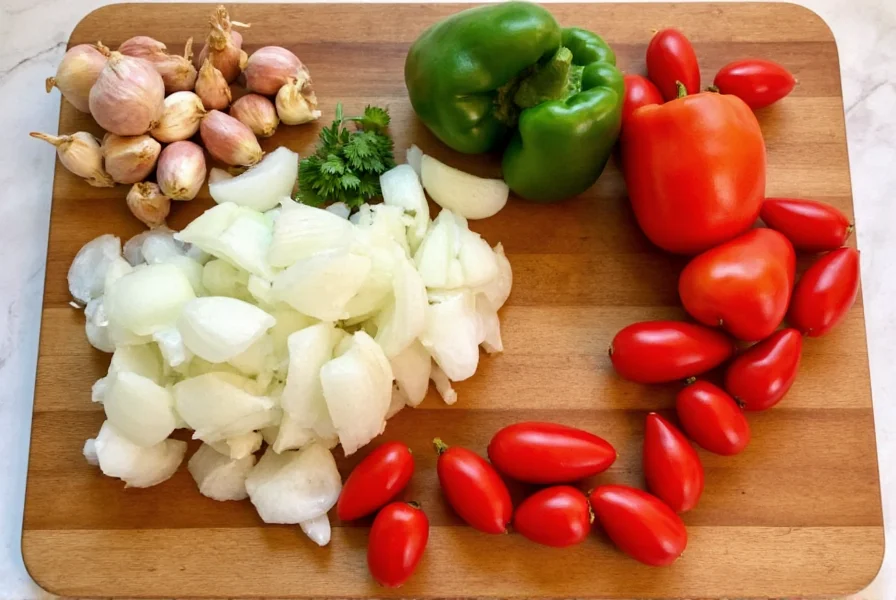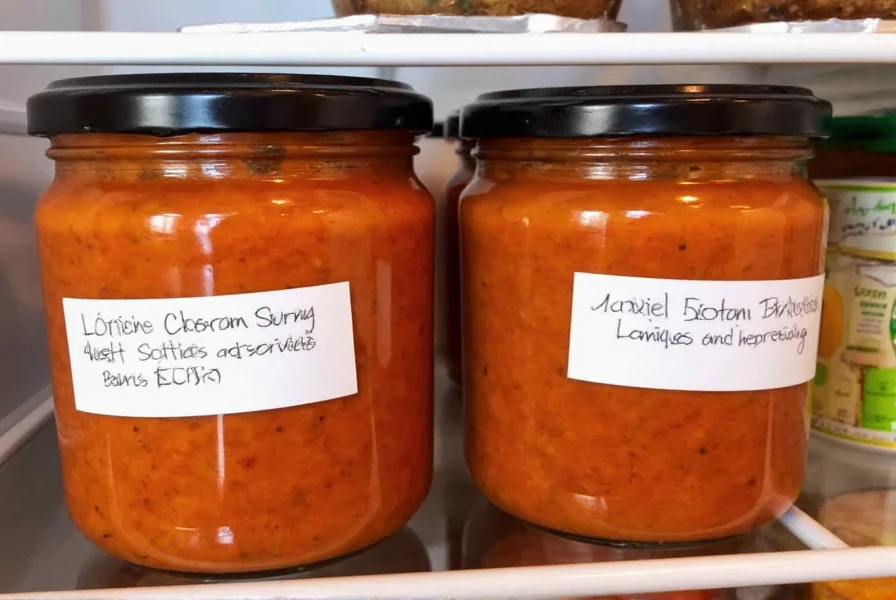Many home cooks searching for "what is sofrita" encounter confusion due to the common misspelling of the authentic culinary term. The correct term is sofrito (pronounced so-FREE-toh), not sofrita. This foundational element serves as the flavor base for numerous traditional dishes across the Spanish-speaking world, with regional variations reflecting local ingredients and culinary traditions.
Understanding Sofrito: The Culinary Foundation
Sofrito represents one of the most important building blocks in Latin and Spanish cooking. This aromatic mixture provides depth and complexity to dishes ranging from rice preparations to stews and braises. Unlike its French counterpart mirepoix (which uses carrots, celery, and onions) or the Cajun holy trinity (onions, celery, and bell peppers), sofrito typically features a combination of onions, garlic, bell peppers, and tomatoes.
Sofrito vs. Sofrita: Clarifying the Terminology
The confusion between sofrito and sofrita stems from Spanish grammar. Sofrito is a masculine noun meaning "a little fried thing" (from the verb sofreír, to lightly fry). Sofrita would be the feminine form, but it's not used as a culinary term in traditional cooking contexts. When searching for authentic sofrito recipe instructions, using the correct term ensures access to accurate information.
Regional Variations of Sofrito
While the basic concept remains consistent, sofrito varies significantly across regions:
| Region | Key Ingredients | Distinctive Characteristics |
|---|---|---|
| Puerto Rico | Onions, garlic, cubanelle peppers, cilantro, culantro | Often includes recaito (cilantro-based version) and achiote oil |
| Cuba | Onions, garlic, bell peppers, tomatoes, cumin | Tomatoes are essential; often includes oregano |
| Dominican Republic | Onions, garlic, bell peppers, tomatoes, vinegar | Vinegar adds brightness; sometimes includes olives |
| Spain | Onions, garlic, tomatoes, olive oil | Simpler version; forms base for paella and other rice dishes |
Essential Ingredients in Traditional Sofrito
The core components of sofrito remain remarkably consistent despite regional variations. When preparing homemade sofrito from scratch, these ingredients form the foundation:
- Onions - White or yellow onions provide sweetness and depth
- Garlic - Essential for aromatic complexity
- Bell peppers - Typically green, though some regions use red or yellow
- Tomatoes - Fresh or canned, depending on regional tradition
- Olive oil - The preferred cooking fat in most traditions

How to Prepare Authentic Sofrito
Creating sofrito requires attention to technique as much as ingredients. For those seeking step-by-step sofrito preparation guide, follow these traditional methods:
- Finely chop all vegetables to ensure even cooking and maximum flavor release
- Heat high-quality olive oil in a heavy-bottomed pan over medium-low heat
- Add onions first, cooking slowly until translucent (5-7 minutes)
- Add garlic and bell peppers, continuing to cook gently without browning
- Incorporate tomatoes and any additional regional ingredients
- Simmer gently for 20-30 minutes until flavors meld and mixture thickens
- Cool completely before storing or using
Culinary Applications of Sofrito
Sofrito serves as the flavor foundation for countless dishes. When exploring traditional recipes using sofrito base, consider these classic applications:
- As the starting point for arroz con pollo and other rice dishes
- Base for bean stews like Cuban black beans or Puerto Rican habichuelas
- Essential component in picadillo (seasoned ground meat)
- Flavor enhancer for vegetable sautés and braised meats
- Key ingredient in many seafood preparations
Storage and Preservation Techniques
One of sofrito's advantages is its excellent storage properties. For those interested in making sofrito in bulk for meal prep, proper storage extends its shelf life significantly:
- Refrigerate in airtight containers for up to one week
- Freeze in ice cube trays, then transfer to freezer bags for up to six months
- Preserve in olive oil in sterilized jars for refrigerator storage up to one month
- Dehydrate for powdered version (less common but possible)

Common Mistakes to Avoid When Making Sofrito
Even experienced cooks can make errors when preparing this foundational element. When following authentic sofrito cooking instructions, avoid these pitfalls:
- Rushing the cooking process - sofrito requires slow, gentle cooking to develop flavors
- Using high heat that causes ingredients to brown rather than soften
- Adding ingredients in the wrong order, preventing proper flavor development
- Using pre-minced garlic or other shortcut ingredients that lack freshness
- Overlooking regional differences when attempting specific traditional dishes
Conclusion
Understanding the proper terminology and preparation of sofrito—often mistakenly called sofrita—opens doors to authentic Latin American and Spanish cooking. This flavor base represents more than just a mixture of ingredients; it embodies centuries of culinary tradition and regional adaptation. By mastering sofrito preparation and application, home cooks can significantly elevate their ability to create genuine, flavorful dishes from various Hispanic culinary traditions. Whether you're searching for basic sofrito recipe for beginners or exploring regional sofrito variations for advanced cooking, this foundational element remains essential to countless beloved dishes.
Frequently Asked Questions
Is sofrita the same as sofrito?
No, sofrita is not the standard culinary term. Sofrito (masculine) is the correct term for this flavor base. Sofrita would be the feminine form in Spanish grammar but isn't used in cooking contexts. This common confusion often leads to search errors when looking for authentic recipes.
Can I substitute sofrito in recipes?
While substitutions are possible, authentic dishes rely on sofrito's specific flavor profile. In a pinch, you could use a combination of finely diced onions, garlic, bell peppers, and tomatoes sautéed slowly in olive oil. Commercial sofrito products exist but vary significantly in quality and authenticity compared to homemade versions.
How long does homemade sofrito last?
Properly stored in an airtight container, homemade sofrito lasts 5-7 days in the refrigerator. For longer storage, freeze sofrito in ice cube trays then transfer to freezer bags, where it will maintain quality for 4-6 months. Some traditional methods preserve sofrito in olive oil for extended refrigerator storage.
What's the difference between Puerto Rican and Cuban sofrito?
Puerto Rican sofrito typically includes culantro (recao) and cilantro, often with achiote oil, and may be prepared as recaito (without tomatoes). Cuban sofrito always includes tomatoes and often features cumin and oregano. Both versions use onions, garlic, and bell peppers as foundational ingredients but differ in additional components and preparation methods.
Can I make sofrito without tomatoes?
Yes, some regional variations like Puerto Rican recaito omit tomatoes. This version focuses on onions, garlic, bell peppers, culantro, and cilantro. Tomato-free sofrito works well in dishes where tomato flavor might overpower other ingredients or in recipes following specific regional traditions that don't include tomatoes in their base.










 浙公网安备
33010002000092号
浙公网安备
33010002000092号 浙B2-20120091-4
浙B2-20120091-4